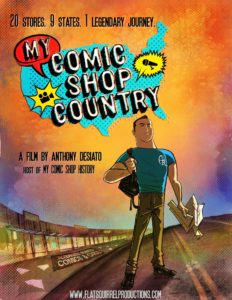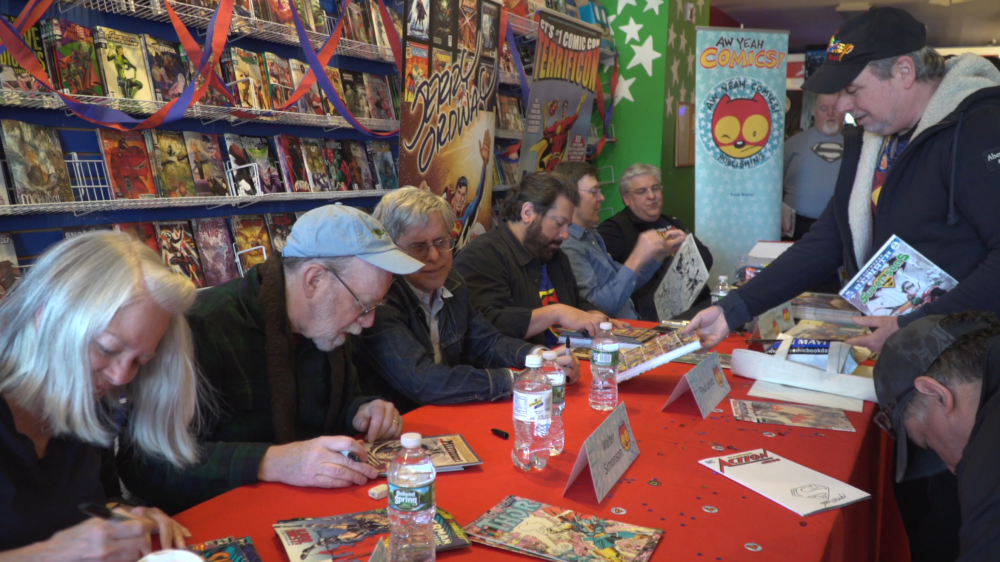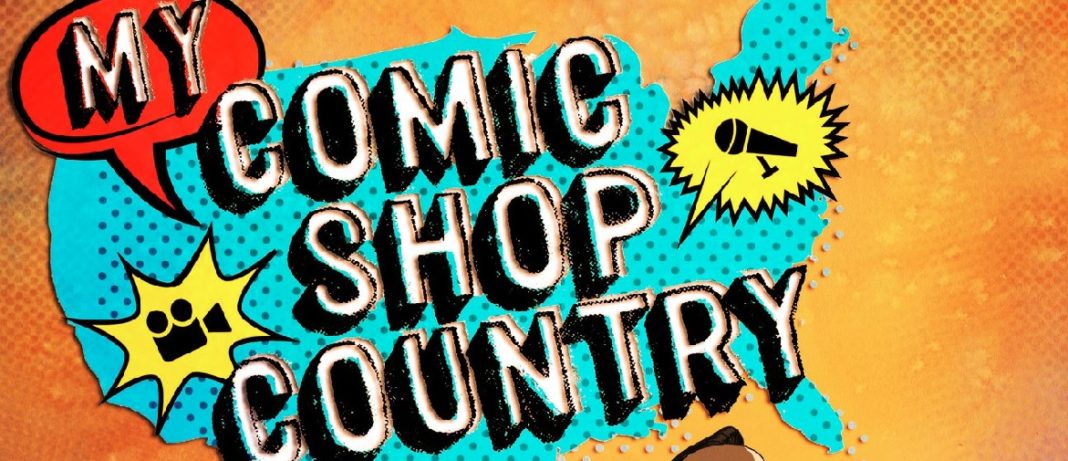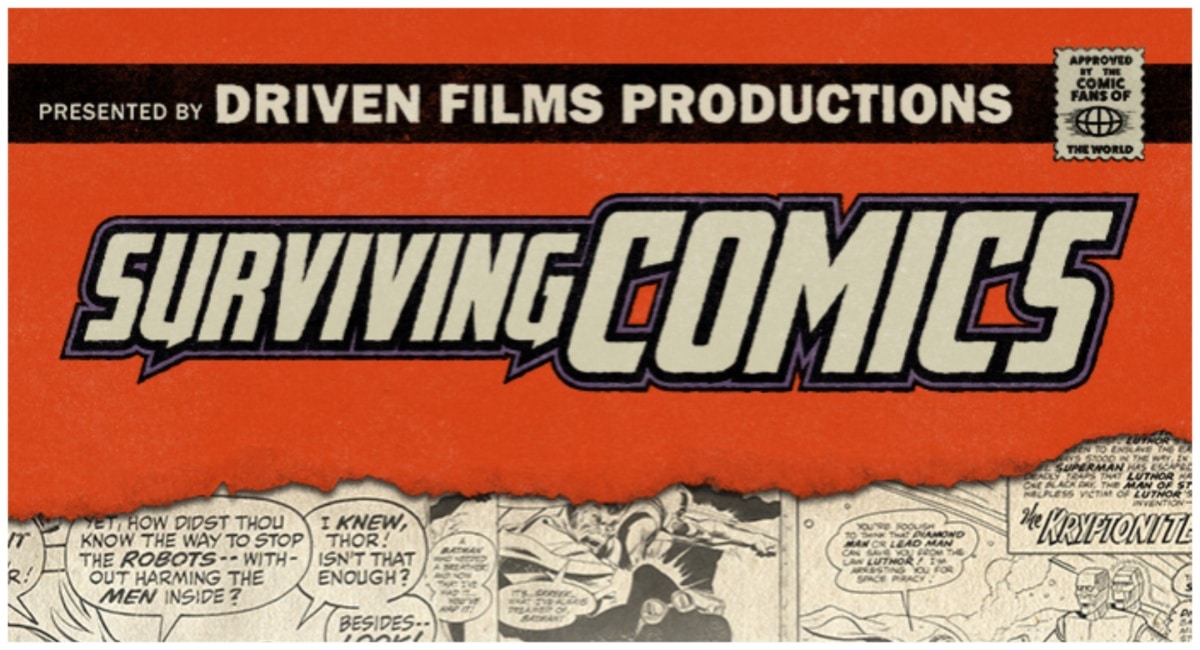
I had the fortune to talk with Desiato about this ambitious documentary, which is currently seeking distribution but will be screening this weekend at Keystone Comic Con. Check out the trailer below, then see what Desiato had to say about the project.
Taimur Dar: Let’s start with the obvious question i.e. what’s the genesis of how this comic shop documentary came to be?
Anthony Desiato: As I like to say—it started with an ending. My local comic shop (Alternate Realities in Scarsdale, NY) closed in 2015 after 23 years in operation. I had worked and shopped there during my formative high school & college years, and it was 100% a clubhouse for myself and many others. I started my podcast to eulogize AR, and then it became something else. I became curious about other stores out there and whether the same types of communities were forming elsewhere. I already had a good sense as to what made “my” store distinct, but what is it about the comic shop as an institution that sets it apart from other retail establishments? That was the starting point.
Dar: Don’t think it’s an understatement to say that visiting 20 comic stores across nine states was quite an ambitious task. How did you go about selecting the comic stores that would be featured in the documentary?
Desiato: First with the podcast and later with the documentary, it was a mix of research, referrals, and preexisting relationships. The aim was to represent a cross-section of stores. For example, West Village Comics in NYC had been open for about a month when I filmed there, while Acme Comics (Greenbsoro, NC) was celebrating its 35th anniversary. I also wanted the movie to live up to its name, so I ultimately hit nine states from coast to coast.
Dar: What challenges did you encounter in making this documentary?
Desiato: There were some tricky lines to walk, like shining a light on something that I love while also taking a hard look at the realities of the industry. Being thorough enough to satisfy those in the know while also providing enough context to make it accessible for non-comics fans was also a balance. In the end, I’m very proud of where we landed.
Dar: There’s been a lot of doom and gloom for brick and mortar comic shops based on number of shops closing in last few years. The closing of St. Marks Comics was a huge blow early in the year, but not completely unexpected considering the costs of operating in Manhattan. How does your documentary examine the problems stores face?
Desiato: Yeah, you could say that! [Laughs]. The movie really takes the viewer behind the scenes of the running of the comic shop and specifically lays out the challenges facing stores today, from the familiar struggles with ordering and delinquent customers to larger questions about reading habits and shifting audience demographics. That being said, the movie does not adopt that “doom and gloom” mentality, mostly because I think that doesn’t reflect some truly impressive efforts on the parts of stores (especially the ones in the movie) to remain relevant.
Dar: How have comic stores in your view changed now compared to previous decades, or at least when you first started covering the comic store business?
Desiato: I’ve only been doing my podcast for four years, but as someone who worked at a comic shop for (more or less) the first decade of the 2000s, certain changes are definitely evident. There has been such a proliferation of content (in terms of both the number of comics titles being published as well as other forms of entertainment) and means of communication (specifically, social media). And I think both of these things have presented challenges and opportunities. Stores can and do use social media far more now than even a few years ago, which is a great way to reach customers, but there’s also a lot more noise to cut through and a lot more vying for people’s attention.
Dar: In your travels documenting the various comic stores, what were the customer demographics like? Is it still primarily older male dominated or is it more diverse than people are inclined to believe?
Desiato: A little bit of both, to be honest. The traditional customer demographic still holds true, particularly when we’re talking about the Wednesday Warriors, but there is diversity among customers, too. And one of the things you see in the movie is how stores try to cater to that diverse audience by being more inclusive — in terms of the atmosphere they cultivate and the range of products they carry. Marc Hammond of Aw Yeah Comics also makes a great point in the doc about how — to a young reader — graphic novels are comics. When young readers come in looking for the latest “issue,” they’re not talking about a floppy. They’re talking about the collected edition. So there’s certainly a transition period that seems to be occurring.
Dar: On the publishing side of things, news broke not too long ago that after 25 years DC’s acclaimed and beloved Vertigo imprint will cease to be. Curious as to your reaction?
Desiato: It didn’t come as a complete shock, as there had been rumblings of the “sunsetting” of the imprint for a little while. Still, as a fan, I’m definitely sad to see it go. Y: The Last Man and Preacher are among my all-time favorite series. On the bright side, it seems that creators are finding other outlets for their creator-owned work, but the pedigree of an imprint like Vertigo isn’t something that comes along every day. End of an era, for sure.
Dar: DC Comics publisher Dan DiDio and DC Chief Creative Officer Jim Lee recently spoke with ICv2 regarding their views on the comics industry and among other things mentioned “overreliance on nostalgia, speculator marketing, variant covers, and a lot of things that seem to be driving numbers in sales to give the appearance of a healthy industry, but it’s not built on the ongoing success of the individual titles in order to keep those numbers successful and maintained.” From your experience in comic shops and making this documentary, what are your thoughts on these observations?
Desiato: That speaks to an idea that is explored in the movie: whether you’re on the retail side or the publisher side, there’s a need to find new readers. If you’re talking about variant covers and the like, then you’re really talking about selling more to your existing customers, right? But for true growth, the industry needs to tap into new audiences. In the doc, one of my local shops, Aw Yeah Comics, sets up a table at a movie theater during the Avengers: Infinity War opening weekend. That’s a very tangible example of a store trying to stimulate growth. At the publisher level, DC’s new lines of graphic novels aimed at younger readers makes a lot of sense.

Dar: What do you hope people, both diehard and non-comic readers, who watch the My Comic Shop Country documentary take away from it?
Desiato: In the end, I hope all viewers come away with an understanding of and appreciation for the ability of the comic shop to foster connection. And, specifically for the non-initiated, they’re probably at least familiar with the characters they’ve seen on the big screen—here’s their chance to see where those characters came from and how hard the people on the front lines work to introduce them to readers.
Dar: Finally, current and future projects people should be aware of?
Desiato: The My Comic Shop History podcast! Season 5 is currently underway with an exploration of Westchester County’s lost comic shops. On a personal level, it’s a look back at the quintessential stores of the area that I went to as a kid. But the bigger picture is that Westchester in the ’90s represents a microcosm of the industry during a pivotal period. You hear a lot about how there are far fewer shops than there used to be, and you really see that play out in Westchester. People can check out those episodes on Apple Podcasts and other services, and there’s also four other seasons to dive into for any new listeners.
Subscribe to Flat Squirrel Productions mailing list for updates
Like on Facebook
Follow on Instagram
Follow on Twitter
Become a patron








